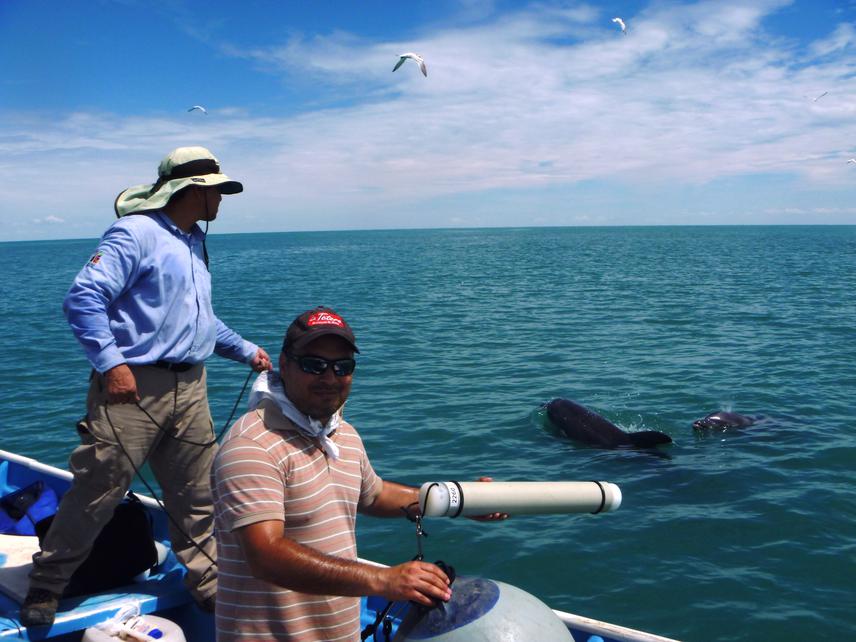Gustavo Cárdenas Hinojosa
The goal of the project is to reducing bias in monitoring the population trends of vaquita, by studying potential effects of dolphins and other sound sources in the acoustic behavior of vaquita.

Vaquita is the most endangered small cetacean in the world. Starting in 2008 the Government of Mexico began implementing a recovery program known as PACE-Vaquita. The goal of this program is to ensure the recovery of vaquita by promoting the sustainable use and management of marine and coastal resources in the Upper Gulf of California. Vaquitas can be detected using acoustic devices that record their unique clicks. In 2011, the National Institute of Ecology and Climate Change implemented an acoustic monitoring program to estimate population trends to assess the success of PACE-Vaquita. Reviewing of the first data sets raised the question of the potential influence of dolphins to modify the acoustic behavior of vaquita, which could lead to biases estimating the population trend. It is known that in some areas dolphins displace harbor porpoises. Furthermore, there are acoustic sources (as boats) that could have a similar effect on vaquitas. Therefore, the goal of this project is to study potential effects of dolphins and other sound sources in the acoustic behavior of vaquita, as a way to introduce these parameters in the model to estimate the vaquita population trend.
We will survey aboard a small outboard boat in the Refuge of Vaquita to look for dolphins. During the encounters, we will navigate toward their swimming trajectory to deploy a C-pod (acoustic detector) to record the vocalizations of the animals. Data like behavior, species-identification, and distance from the boat will be recorded. During the shrimp season, we will record the noise produced by fishing boats and shrimp trawlers. Also, we will record the noise produced by wind and tidal forces by deploying an acoustic detector on the sea bottom with a mooring system.
All these data will allow us to construct acoustic signatures of the different noise sources, which will allow the unambiguous identification of acoustic signals in the data of the actual acoustic monitoring program. In this way, a database of acoustic encounters of dolphins, boats and other sources could be constructed, aside the data of vaquita encounters. With this information, we will be able to apply statistical tools that reveal the influence of these noise sources in the acoustic behavior of vaquita, in order to incorporate these sources of variation in the main model to estimate the vaquita population trend.